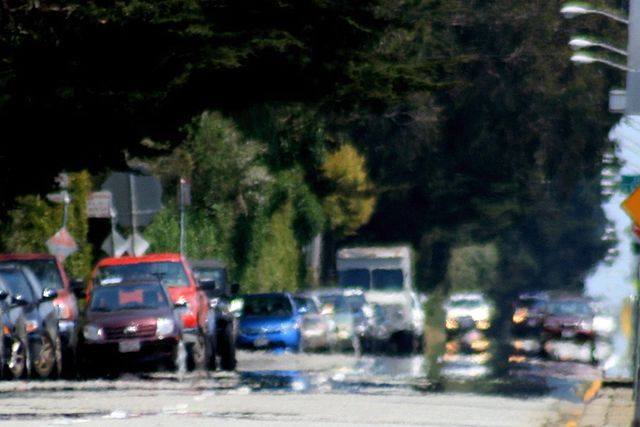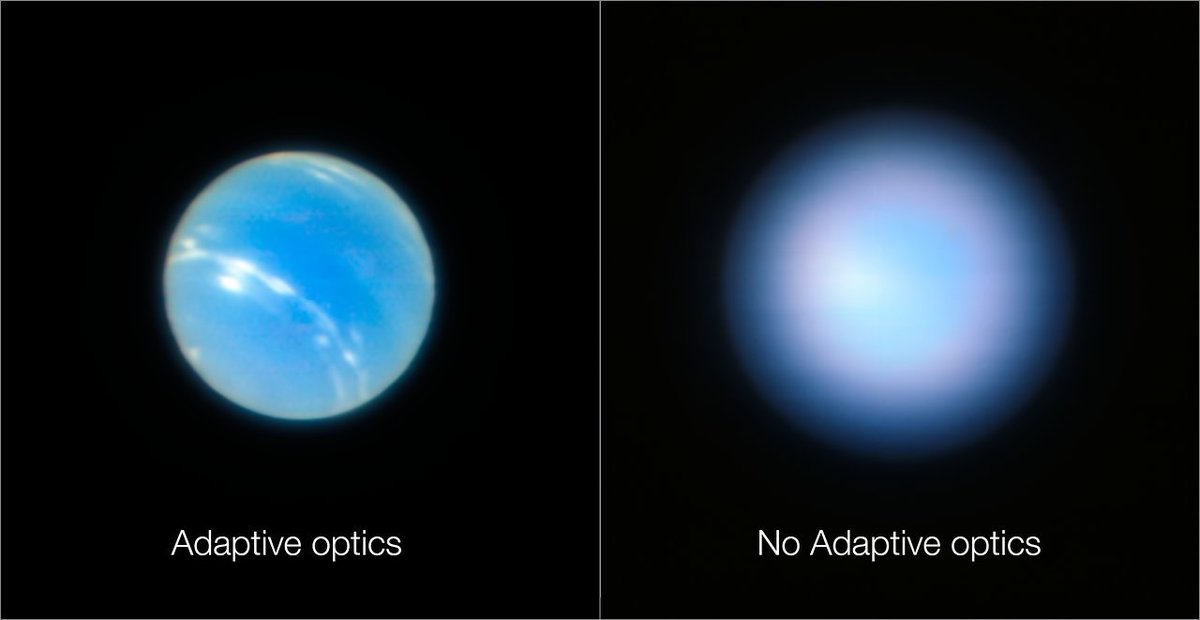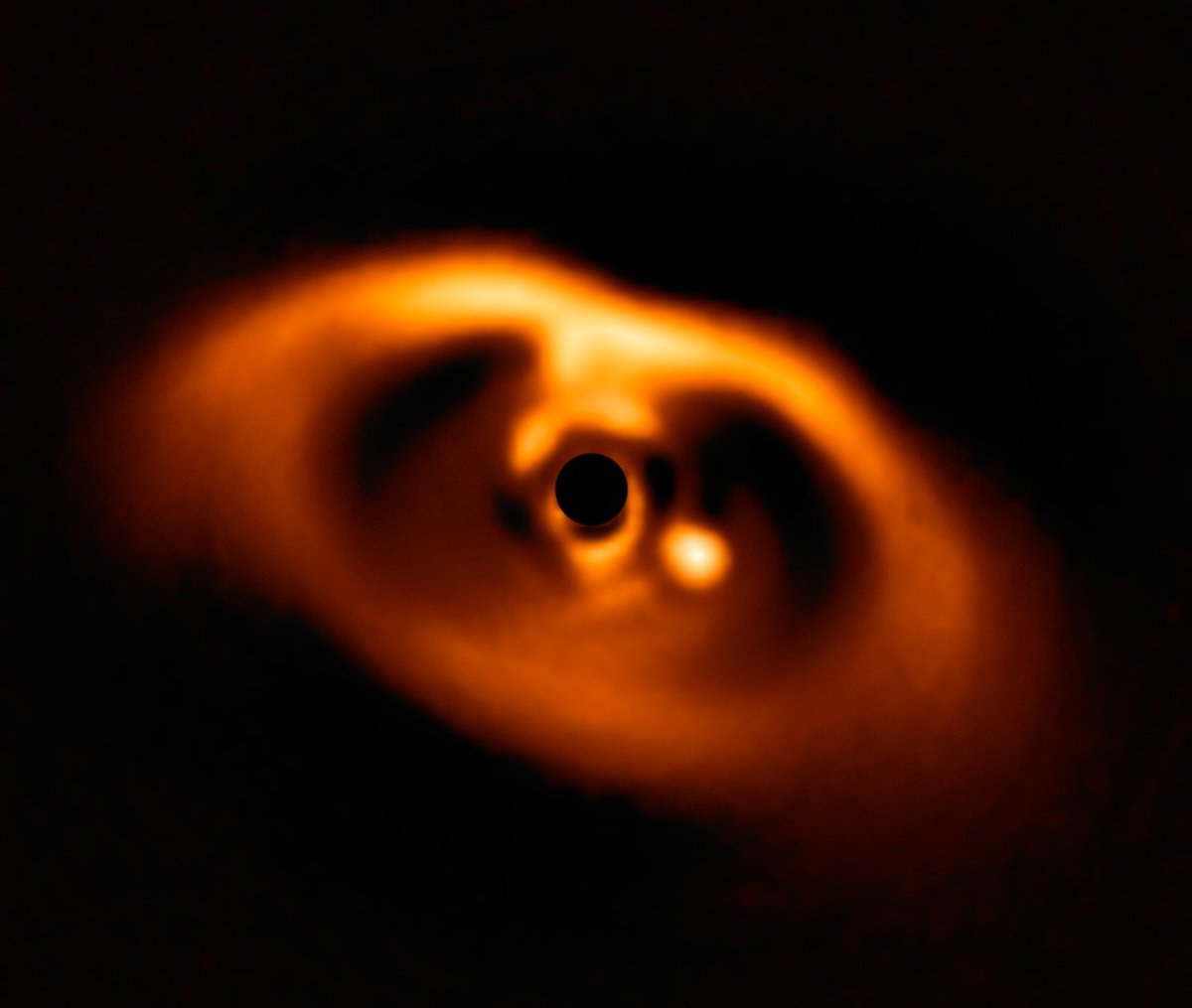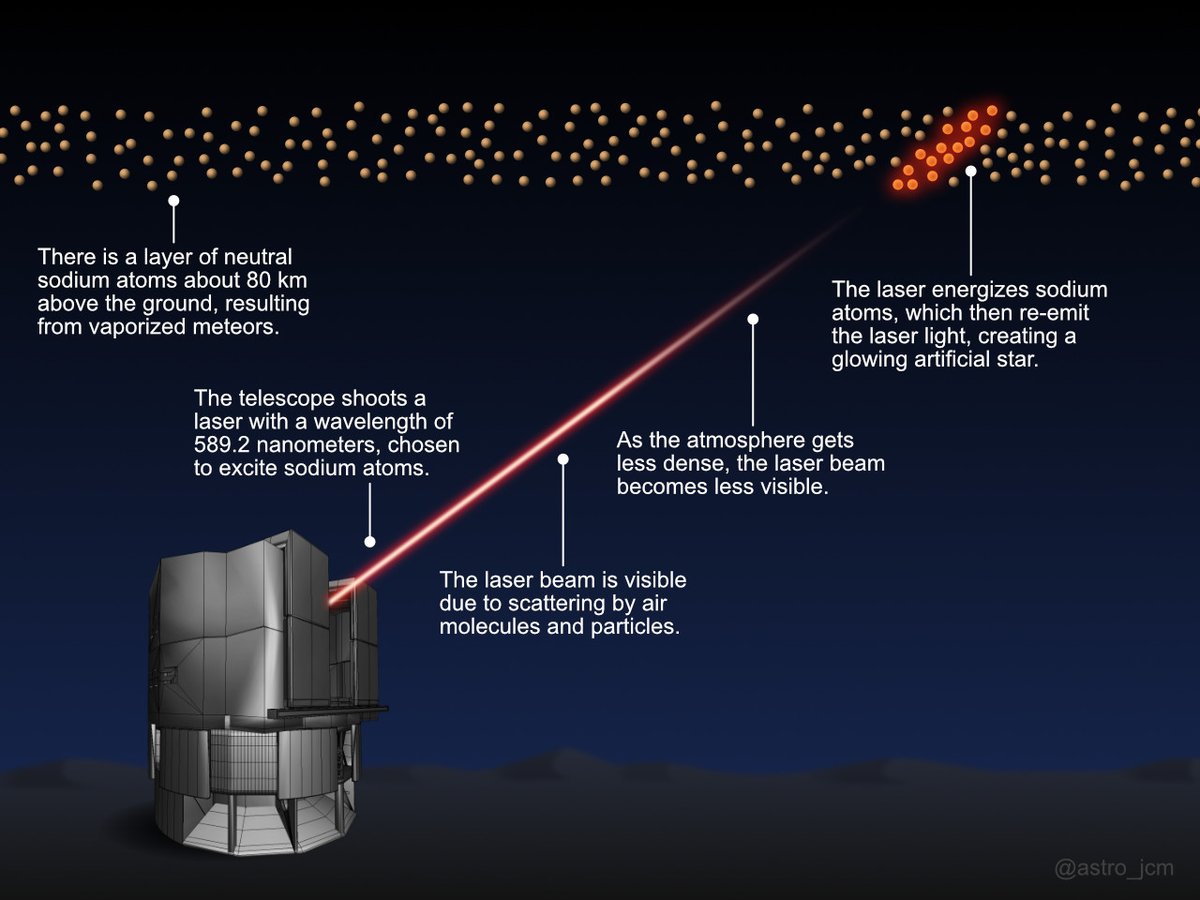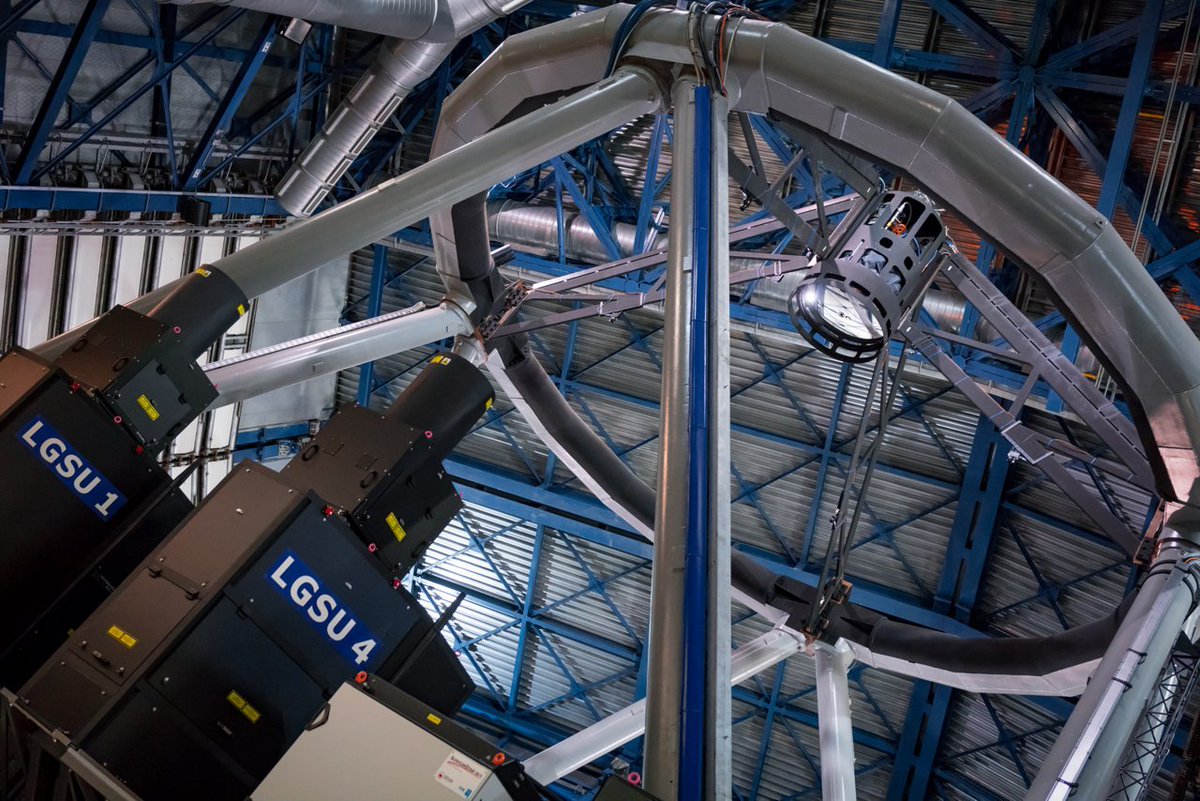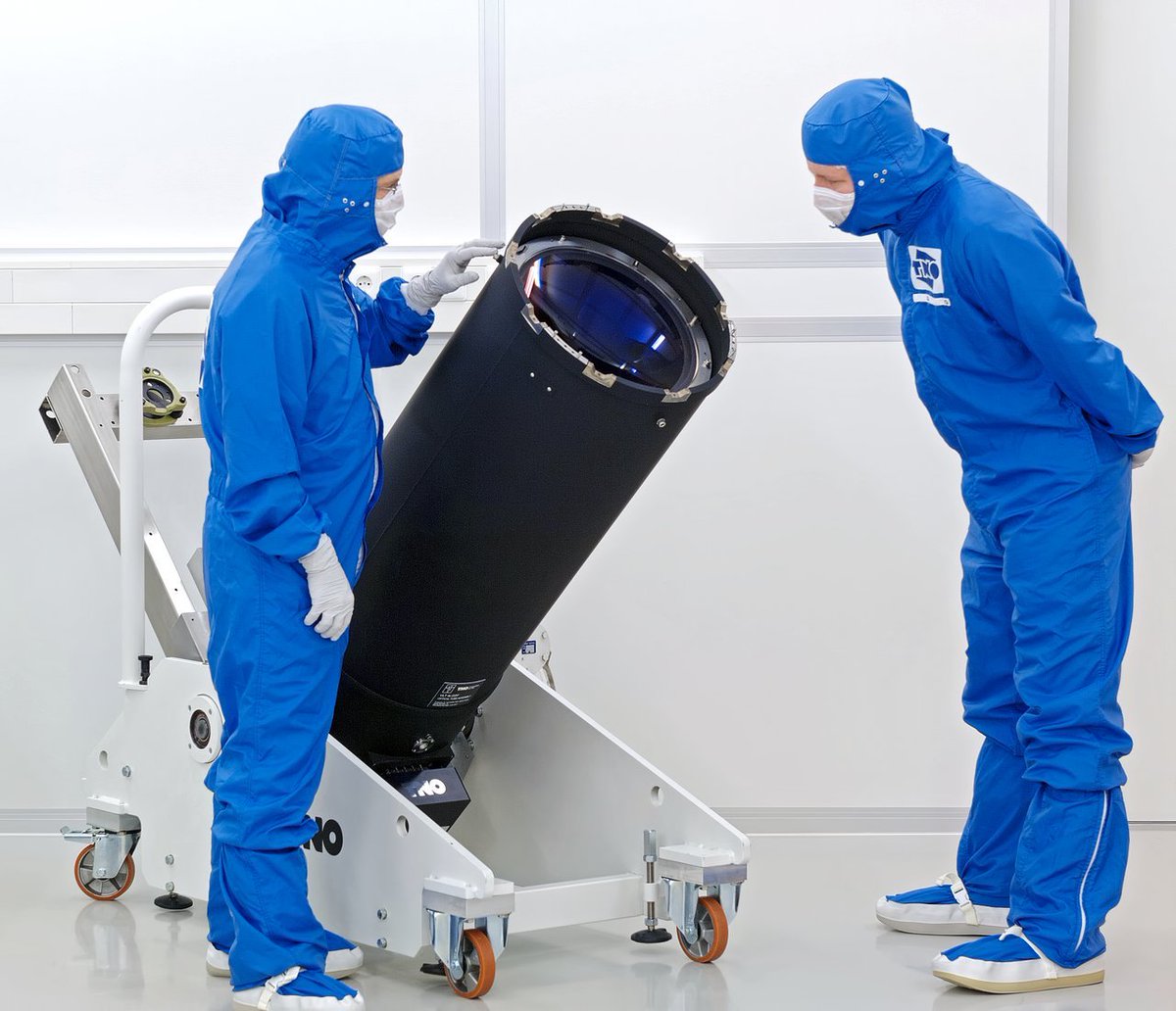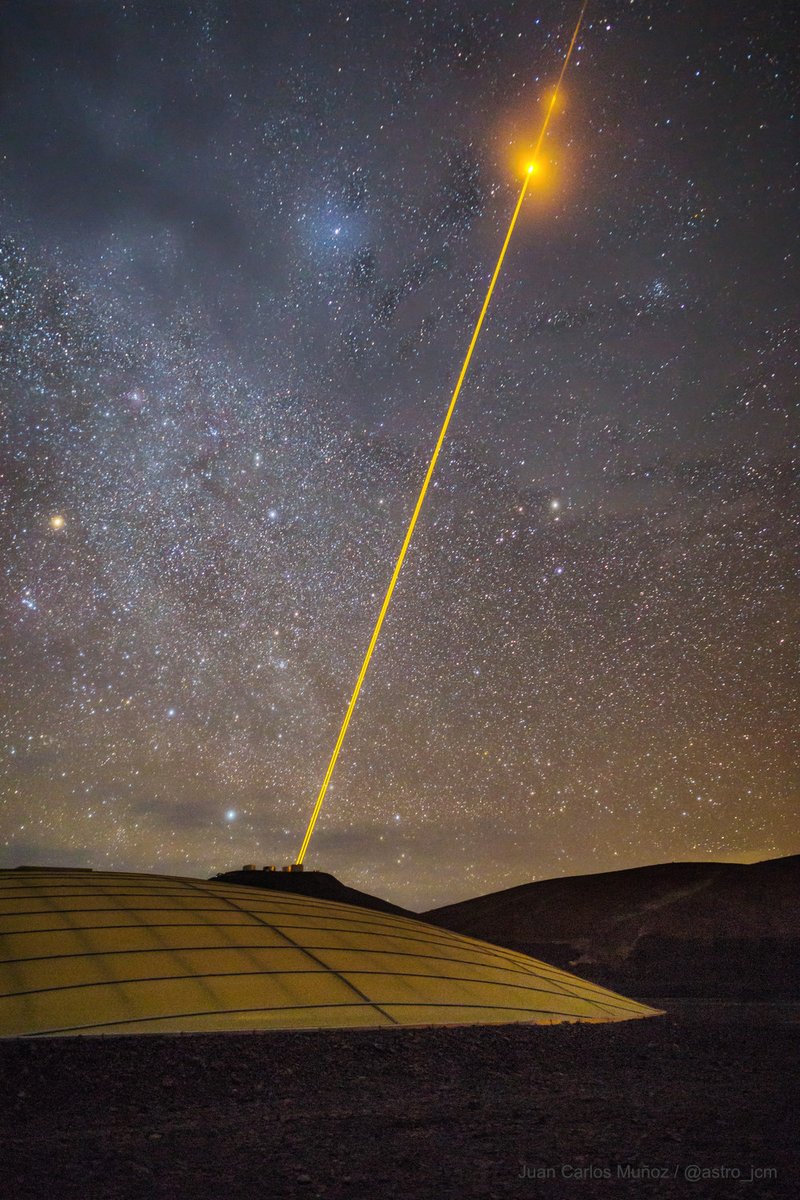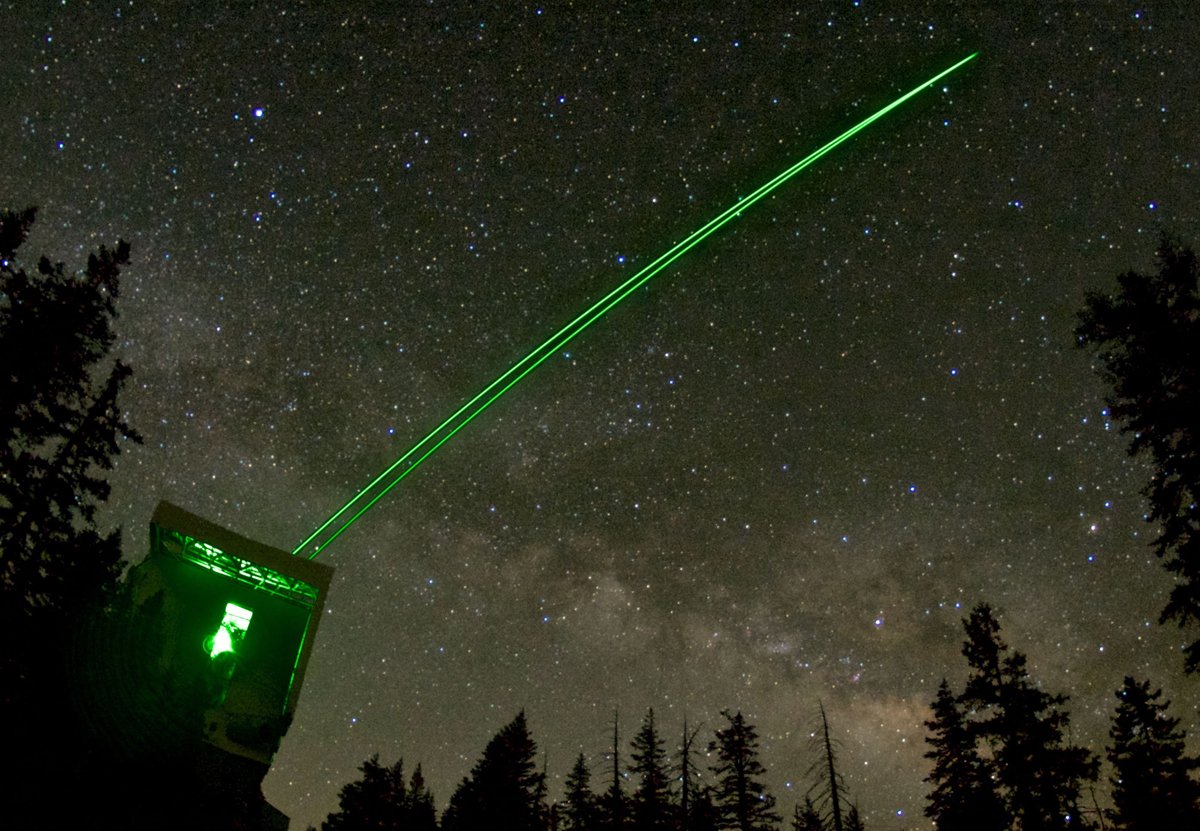1/ Ok, so I promised today we’d talk about lasers in astronomy. What do we need them for? Are they dangerous? Do they come in different colors? With how many Star Wars references will Juan Carlos punish us in this thread? Let’s find out!
 ESO/F. Kamphues
ESO/F. Kamphues
 ESO/F. Kamphues
ESO/F. Kamphues
2/ There are two reasons why astronomers build large telescopes: to collect more light (and therefore detect fainter objects), and to discern finer details. The latter however is limited by the blur due to atmospheric turbulence.
3/ Have you noticed that objects look blurred and shimmering when seen through a layer of hot air, such as above the asphalt on a hot day? That’s because air bubbles at different temperatures and densities bends light rays at different angles.
 Brocken Inaglory
Brocken Inaglory
 Brocken Inaglory
Brocken Inaglory
4/ The same happens in the atmosphere: there are cells of air at different temperatures/densities in constant motion, blurring the images of celestial objects. This is in fact the reason why stars twinkle. In space they’d look perfectly still.
5/ In order to take full advantage of the fact that large mirrors can resolve finer details we must therefore find a way to counteract atmospheric turbulence. We can do this with a technique called adaptive optics. That's like the best prescription glasses you could wish for :-)
6/ This is the gist of it: by taking 1000s of images per second of a star we can measure how it’s deformed at any instant. We then make the light of that star bounce off a small deformable mirror whose shape changes very rapidly to precisely counteract these distortions.
7/ Here I’m purposely tiptoeing over the details of how we actually measure how the star is deformed. But if you’re curious, at the end of this thread I’ll link to another thread where I explain this in much more depth.
8/ This is how adaptive optics looks like in real time. I recorded this video while observing with the SPHERE instrument at Paranal. Notice how those blobs suddenly resolve into well-separated stars when the deformable mirror starts moving!
9/ This is an example of the dramatic impact that adaptive optics has on the final image quality. Here you can see Neptune observed with the MUSE instrument at the VLT, with and without adaptive optics. Cool, huh?
 ESO/P. Weilbacher (AIP)
ESO/P. Weilbacher (AIP)
 ESO/P. Weilbacher (AIP)
ESO/P. Weilbacher (AIP)
10/ Adaptive optics is used a lot to directly image planets that orbit other stars. Instruments like SPHERE at the VLT or GPI at Gemini are what we call extreme adaptive optics systems, and combine adaptive optic with other tricks to do just that.
 ESO/A. Müller et al.
ESO/A. Müller et al.
 ESO/A. Müller et al.
ESO/A. Müller et al.
11/ But to do this we must take 100s or even 1000s of images of a star. This star must therefore be quite bright, otherwise we won’t see anything in such short images.
12/ If the target you want to observe is too faint, you can still get away with it if there happens to be a bright star nearby. But bright stars are rare, so with this technique you can only cover about 10% of the sky.
13/ Here’s where the lasers come in: if there are no suitable bright stars close to our target, we can create our own with lasers! There are a couple of ways to do this, but the most common one involves exciting sodium atoms high above the ground and making them glow:
14/ What we do then is monitor how this artificial “star” twinkles, just like we’d do with an actual star, and deform the mirror accordingly. Again, I’m omitting some details here, but I’ll link to a more in-depth thread at the end of this one.
15/ Below are some common questions questions I often get about this, but feel free to ask your own!
16/ Q: is this deformable mirror the big primary mirror of the telescope?
A: no, it’s either the secondary mirror (the one you see in this image) or a smaller one within the scientific instrument itself. Not all telescopes have a deformable secondary mirror.
 ESO/E. Vernet
ESO/E. Vernet
A: no, it’s either the secondary mirror (the one you see in this image) or a smaller one within the scientific instrument itself. Not all telescopes have a deformable secondary mirror.
 ESO/E. Vernet
ESO/E. Vernet
17/Q: but I’ve heard the primary mirror can be deformed too.
A: Yes, this is called *active* optics (not adaptive). These large mirror bend under their own weight, so we deform them to correct this. But this is done about once per minute or so, not 1000s of times per second!
A: Yes, this is called *active* optics (not adaptive). These large mirror bend under their own weight, so we deform them to correct this. But this is done about once per minute or so, not 1000s of times per second!
18/Q: How powerful are these lasers? Can they cut through stuff?
A: they can’t :-) The power of these lasers varies from one telescope to another. The ones at Paranal are 22 Watts each, with a diameter of 30 cm. Each one is fired with a device like this:
 F. Kamphues/TNO/ESO
F. Kamphues/TNO/ESO
A: they can’t :-) The power of these lasers varies from one telescope to another. The ones at Paranal are 22 Watts each, with a diameter of 30 cm. Each one is fired with a device like this:
 F. Kamphues/TNO/ESO
F. Kamphues/TNO/ESO
19/ Q: so they can’t obliterate rebel planets…
A: No. Officially.
A: No. Officially.
20/ Q: how far do the lasers reach?
A: While the artificial stars are about 80-90 km above the ground, the light of the lasers continues well past that. We just don’t see it because there’s nothing to scatter the light around as the air becomes too thin.
A: While the artificial stars are about 80-90 km above the ground, the light of the lasers continues well past that. We just don’t see it because there’s nothing to scatter the light around as the air becomes too thin.
21/ Q: where do these sodium atoms come from?
A: They’re deposited by meteorites as they break up when they enter the atmosphere. Which means we’re using stuff that came from space to help us observe space :-)
A: They’re deposited by meteorites as they break up when they enter the atmosphere. Which means we’re using stuff that came from space to help us observe space :-)
22/ Q: are the lasers dangerous for planes?
A: In the past, observatories had spotters that would stay out watching out for planes coming close to the lasers. Now we have aircraft avoidance systems that shut down the lasers if planes are detected in the vicinity of the lasers
A: In the past, observatories had spotters that would stay out watching out for planes coming close to the lasers. Now we have aircraft avoidance systems that shut down the lasers if planes are detected in the vicinity of the lasers
23/ Q: can the lasers spoil observations from nearby telescopes?
A: Yes. We use a tool (developed for Mauna Kea) to coordinate observations between telescopes. Also, some instruments can’t see the lasers because they observe at different wavelengths, so they're not affected.
A: Yes. We use a tool (developed for Mauna Kea) to coordinate observations between telescopes. Also, some instruments can’t see the lasers because they observe at different wavelengths, so they're not affected.
24/ Q: what happens if the lasers hit some clouds?
A: Clouds scatter around the light from the lasers. We normally don’t use them when it’s cloudy to avoid spoiling observations from other telescopes. I was lucky to take the image below before they shut the lasers off :-)
A: Clouds scatter around the light from the lasers. We normally don’t use them when it’s cloudy to avoid spoiling observations from other telescopes. I was lucky to take the image below before they shut the lasers off :-)
25/ Q: do you say “You may fire when ready” to turn on the lasers?
A: no :-) But we do play lightsaber sounds (this is true!).
A: no :-) But we do play lightsaber sounds (this is true!).
25/ Q: are all astronomical lasers orange?
A: No. There are other lasers called Rayleigh lasers that can have different colors, like green, as in the image below from the Large Binocular Telescope in Arizona.
 S. Rabien
S. Rabien
A: No. There are other lasers called Rayleigh lasers that can have different colors, like green, as in the image below from the Large Binocular Telescope in Arizona.
 S. Rabien
S. Rabien
26/ As I said earlier, I’ve purposely skipped some details about how adaptive optics works to keep it simple, but I have two extra threads for you. In this one I explain how we actually measure the atmospheric distortion on a star: https://twitter.com/astro_jcm/status/1229398249699774465
27/ And in this other thread I describe how the lasers work, and why several lasers provide a better correction than a single laser over a larger area in the sky: https://twitter.com/astro_jcm/status/1248640837086560257
28/ That’s it! If you have any questions, feel free to ask. Now, throughout all these threads I’ve mostly talked about ESO and Paranal, which operates in a very specific way. But other observatories do things differently! So...
29/ ...on Friday I’'ll tell you about other observatories where I’ve been. I particularly like small ones where you have the chance to get your hands dirty (sometimes literally!) with the telescopes and instruments, because that’s how you really learn the tricks of the trade.

 Read on Twitter
Read on Twitter
